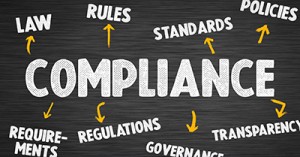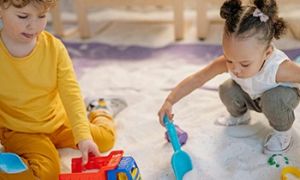As the words indicate, Open-ended questions have no right or wrong answers and thus cannot be answered with a simple, ‘yes’ or ‘no’. Open-ended questions figure in several of the pedagogical practices outlined in the EYLF, like ‘being responsive to children, ‘learning through play and most of all, ‘intentional teaching’. The following article provides the major benefits of using open-ended questions in the early childhood education context.
More Comprehensive
Open-ended questions allow children to include more information, feelings, attitudes and understanding of the topic. Thus while close-ended questions like, “How many colours do you see in this picture?” will offer up a single correct answer, “What do you think is happening in this picture?” will elicit a wider range of details and responses from children. Used creatively, such open-ended also encourage children to think beyond the obvious and explore as many possibilities as they can, thus building their creative skills.
Fosters Cognitive Skills
Using open-ended questions can help children build their cognitive skills when engaged in tasks or activities. For example, if an educator observes a child using blocks to build a tower, instead of asking, “Are you building a tower?’, a question like, ‘Tell me about what you’re doing?’ can get them to think about how they might approach, plan and execute their plans; if the child appears to hit a roadblock, again instead of asking, “do you want help?”, the child can be encouraged to find solutions with open-ended questions like, “Why do you think this happened?’, or “what do you think would work?”. Eventually the educator might also use such questions to extend the child’s thinking by asking, “What would happen if there were...” or “How would this change, if we use these instead of ….?”
More Child-Centred
One of the biggest benefits of using open-ended questions during activities is that it keeps the focus squarely on the child. While close-ended questions like, “Do you want to read a storybook now”, hardly give the child any options, asking an open-ended question like, “I see you picked this storybook about the Gingerbread Man – what do you like about this book?’, gives the child an opportunity to express their own thoughts, ideas and opinions besides giving the educator valuable opportunities to observe children’s interests and strengths and use them as provocations to build further learning opportunities.
Develops Language
Close-ended questions, like Do you love your pet, can be replied with just yes or no. open-ended questions on the other hand like Tell me more about your pet encourages the child to use a lot of different words, for example drawing upon a wider range of vocabulary or adjectives and adverbs when describing their pet dog or rabbit. As children acquire more language, they are better able to develop social and emotional skills – a process which can be further supported by open-ended questions, like “How would you feel if that happened to you?” and “How do you think ... feels?”
In all these ways open-ended questions are hugely important in expanding children's curiosity, creativity, reasoning and independence.
Further Reading
Using Open-Ended Questions with Children - The following article provides information on the benefits of open-ended questions,
Open-Ended Play Materials - The following article provides information on open-ended play materials, the benefits of open-ended play materials, a list of open-ended play materials and more.
Reference:
Benefits of Open-Ended Questions







 As an Educator in Australia, your pay rate falls under the Children’s Services Award 2010. This award states the minimum amount that an employer can
As an Educator in Australia, your pay rate falls under the Children’s Services Award 2010. This award states the minimum amount that an employer can When working as a qualified Early Childhood Teacher (with a university degree) within a service, your rate of pay will come from the Educational Services
When working as a qualified Early Childhood Teacher (with a university degree) within a service, your rate of pay will come from the Educational Services When working as a Diploma Qualified Educator your pay rate is from the Children's Services Award 2010. This Award states your minimum rate of pay
When working as a Diploma Qualified Educator your pay rate is from the Children's Services Award 2010. This Award states your minimum rate of pay When working as a Cert 3 Qualified Educator, your pay rate is from the Children's Services Award 2010. This Award states your minimum rate of
When working as a Cert 3 Qualified Educator, your pay rate is from the Children's Services Award 2010. This Award states your minimum rate of Educational Leaders play a crucial role in their early childhood service by ensuring that the educational program aligns with best practices and supports the holistic
Educational Leaders play a crucial role in their early childhood service by ensuring that the educational program aligns with best practices and supports the holistic In early childhood education and care, ratios are more than a technicality—they are a frontline safeguard. Every child deserves responsive supervision, emotional connection, and developmental
In early childhood education and care, ratios are more than a technicality—they are a frontline safeguard. Every child deserves responsive supervision, emotional connection, and developmental With the new national child safety reforms kicking in on 1 September 2025, early childhood services like yours have a real opportunity to lead the
With the new national child safety reforms kicking in on 1 September 2025, early childhood services like yours have a real opportunity to lead the Here’s a comprehensive Mobile Phone and Smart Watch Policy tailored for early childhood education and care (ECEC) services in Australia, aligned with the latest 2025
Here’s a comprehensive Mobile Phone and Smart Watch Policy tailored for early childhood education and care (ECEC) services in Australia, aligned with the latest 2025 The Sea of Fish Challenge is a national initiative that invites children, educators, families, and communities to create and display fish artworks as a symbol
The Sea of Fish Challenge is a national initiative that invites children, educators, families, and communities to create and display fish artworks as a symbol Cold weather play is incredibly beneficial for early childhood development! It helps children build resilience, strengthen their immune systems, and develop essential motor skills. Here’s
Cold weather play is incredibly beneficial for early childhood development! It helps children build resilience, strengthen their immune systems, and develop essential motor skills. Here’s


